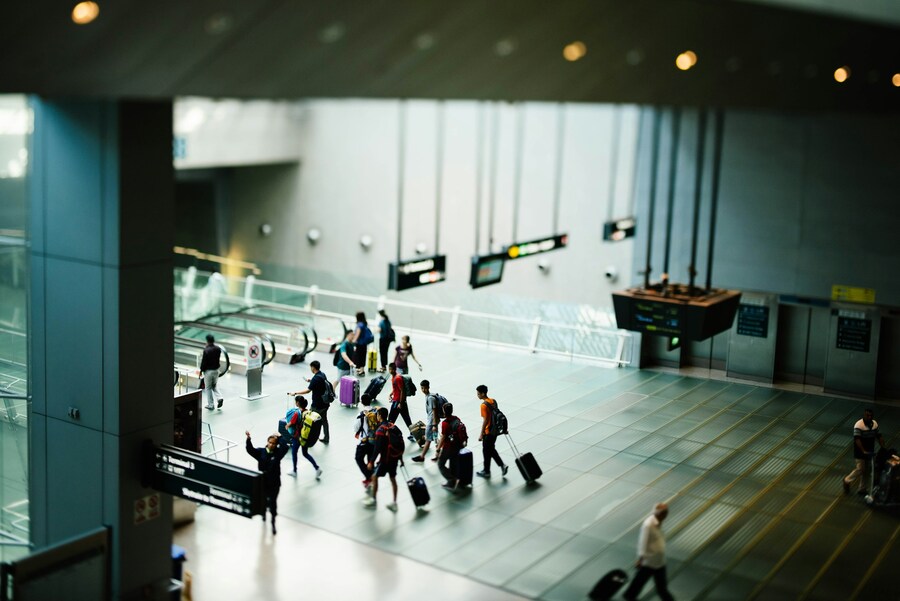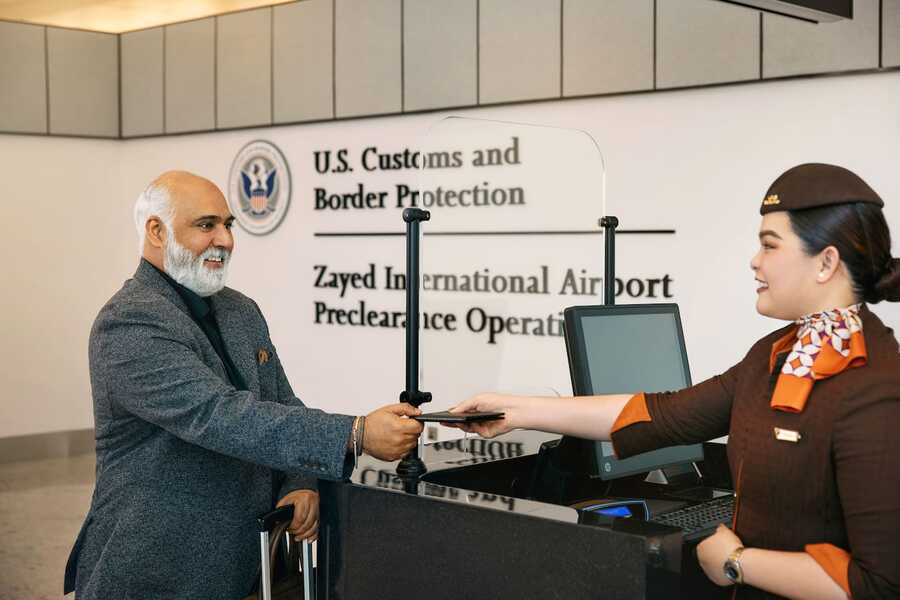International flight connections within the United States often involve a grueling process: landing, clearing U.S. Customs, retrieving bags, and then being subjected to a redundant, mandatory secondary TSA security screening. This unnecessary bottleneck is a notorious source of travel stress, causing significant delays and putting tight connection times at risk, despite passengers already arriving from a secure flight.
Fortunately, the Transportation Security Administration (TSA) has introduced a powerful, often-underutilized procedural advantage: "One Stop Security" (OSS). This system allows a growing group of international travelers to completely bypass that final, frustrating rescreening. OSS is a strategic, risk-based security protocol that trusts the security standards of select foreign airports. It's not an enrollment program but a simple process based on your flight's origin. Understanding how to qualify for OSS and pairing it with other time-saving hacks is essential for modern air travel. So, let's unlock this secret!
Why do some international flights get to skip the security rescreening?
The foundation of One Stop Security rests on a principle of trust and regulatory equivalency. When an international flight lands in the United States, the passengers are transitioning from one sovereign security jurisdiction to another. Traditionally, the only way to guarantee the integrity of the aircraft and the passengers was to perform a secondary security screening. The OSS waiver, however, is granted to flights that originate from foreign airports whose security protocols have been rigorously reviewed and found to be on par with, or exceed, the security standards of the TSA itself. This finding is the result of continuous, collaborative oversight between the U.S. government and the foreign governing body responsible for airport security, often involving on-site inspections and procedural audits.
How one stop security functions
 Source: CHUTTERSNAP/Unsplash
Source: CHUTTERSNAP/Unsplash
For a traveler to benefit from One Stop Security, two main conditions must be met, both centered around the point of origin: the flight must originate from a TSA-vetted foreign airport, and the domestic connecting airport must be a designated participant in the OSS system. When these criteria align, the security process shifts dramatically upon arrival in the United States. The international passenger proceeds directly to U.S. Customs and Border Protection (CBP) for immigration and customs formalities – the step that remains mandatory for all inbound international travelers. They then collect their luggage, if applicable, and proceed to the designated re-check counter for their onward domestic flight. Crucially, at this juncture, instead of being directed to the general public TSA security checkpoint, the passenger is routed to an area that bypasses the full rescreening process. The reason this works is that the TSA and CBP accept that the security screening performed on the passenger and their carry-on bags at the point of origin was sufficient and that the secure environment of the aircraft was maintained throughout the flight.
This bypass is especially vital for the smooth flow of passengers during peak international arrival times. The elimination of thousands of travelers from the domestic security queue at major hubs saves collective hours of time, not just for the international connectors but for the domestic travelers as well, who benefit from a less congested checkpoint.
It's important to understand what the One Stop Security procedure doesn't waive. It doesn't eliminate the need for the traveler to be cleared by CBP, nor does it affect the requirement to claim and re-check any checked baggage. The integrity of checked baggage is managed via the U.S. Federal government's sophisticated baggage screening technology and process, which is integrated with the re-check process after customs. For those traveling only with carry-on luggage, the savings are even more pronounced, as they can head directly to their domestic gate after clearing customs and re-checking their boarding pass at a dedicated desk, without the ritual of removing liquids, laptops, and shoes. The sheer efficiency gained by not having to unpack and repack your carry-on items and not standing in a winding security line is the defining benefit of this program, effectively shaving 30 minutes to an hour or more off the connection time.
Where can you use it?

Source: Google Search
The ability to access One Stop Security is directly tied to the concept of the U.S. Customs Preclearance. The most reliable and widespread beneficiaries of OSS are travelers arriving from an international airport that hosts a U.S. Customs and Border Protection Preclearance facility. Preclearance allows travelers to complete their U.S. immigration, customs, and agricultural inspections before boarding their flight in a foreign country. When these travelers land on U.S. soil, they are treated as domestic arrivals, eliminating the need to wait in massive CBP lines and, just as importantly, already meeting the stringent security requirements that qualify them for the OSS bypass.
The list of Preclearance locations is the most definitive map for guaranteed OSS benefits. These facilities are found across key regions, fundamentally changing the travel dynamic from:
- Canada. Major Canadian gateways, such as Toronto (YYZ), Vancouver (YVR), Montreal (YUL), and others have long had Preclearance capabilities, making flights from these cities an almost seamless transition upon landing in the United States.
- The Caribbean and Bermuda. Popular tourist destinations like Nassau in the Bahamas (NAS), Aruba (AUA), and Bermuda (BDA) host Preclearance facilities. This is a game-changer for holidaymakers connecting to other domestic flights within the States.
- Ireland. Shannon (SNN) and Dublin (DUB) airports are significant transatlantic hubs that offer Preclearance, making travel from Ireland to the United States exceptionally smooth.
- The Middle East. Abu Dhabi International Airport (AUH) in the UAE offers a Preclearance facility, a vital service for connections originating in this strategically important global hub.
While Preclearance guarantees the OSS advantage, the TSA has also established One Stop Security agreements with specific international airports that don't offer full Preclearance. These are generally airports where the TSA has deemed the local security measures to be completely equivalent. Historically, this has included certain key points in Europe, often determined on a bilateral basis. However, the most consistent and broad application remains tied to the Preclearance network. For any given itinerary, the smart traveler should confirm if their exact international origin airport is part of the Preclearance program or if a specific, non-Preclearance OSS agreement is in place. This can often be discerned by checking the U.S. Customs and Border Protection website for their official list of Preclearance locations, which serves as the gold standard for OSS eligibility.
More TSA time-saving hacks

While One Stop Security offers a fantastic advantage for international connectors, the reality is that the majority of travelers will be navigating the standard airport protocols. For these individuals, a suite of other TSA and travel planning strategies exist, collectively designed to make the journey as efficient as possible. These hacks move beyond the conditional OSS waiver and put the control of time-saving back into the hands of the traveler.
The most powerful tools in this arsenal are the Trusted Traveler Programs: TSA PreCheck and CBP's Global Entry.
TSA PreCheck is focused purely on domestic security screening efficiency. It grants pre-approved, low-risk travelers access to a dedicated, expedited screening lane. Passengers enrolled in PreCheck aren't required to remove their shoes, belts, light jackets, laptops from their bags, or the 3-1-1 compliant bag of liquids from their carry-on. The application process is relatively simple, requiring an online application, an in-person, ten-minute interview, and fingerprinting at an enrollment center. The resulting five-year membership often costs less than a single last-minute checked baggage fee and pays for itself in time saved after just a few flights. It's, by far, the most effective way for any frequent traveler to mitigate the unpredictability of airport security wait times, regardless of whether they are making a domestic connection or starting their journey.
Global Entry, in contrast, is designed to expedite the process of clearing U.S. Customs and Border Protection upon arrival in the United States from international travel. Members use automated kiosks at select airports, allowing them to bypass the traditional, often extremely long, processing lines. The best part of Global Entry is that the membership automatically includes TSA PreCheck benefits. Given the small difference in the application fee compared to the vastly expanded utility, Global Entry is the definitive choice for any traveler who flies internationally even semi-regularly.
Beyond these foundational programs, travelers can apply smart travel planning to the start and end of their trips. Securing ground logistics is often overlooked as a time-saving measure, yet a smooth arrival at the airport can set a positive tone for the entire journey. While pre-planning, securing your ground transportation is essential. Many travelers are now exploring airport parking alternatives to the conventional, often expensive, on-site options. This requires due diligence, particularly regarding airport parking safety measures provided by third-party facilities. Services like ParkingNearAirports.io offer a streamlined online booking experience, which is crucial since unexpected plan changes may necessitate you to quickly cancel airport parking reservation without hassle. Knowing you have a reserved spot and a shuttle waiting provides peace of mind that a frantic search for space in a crowded garage cannot match.
Finally, general preparedness and adherence to the rules cannot be overstated. By checking the TSA website for the most current rules regarding liquids and prohibited items, and organizing documents and electronics in a security-friendly manner before reaching the checkpoint, travelers shave off the cumulative seconds that lead to minutes of delay for everyone. Whether leveraging One Stop Security, a Trusted Traveler Program, or simple organizational diligence, the common goal is to minimize friction and maximize the efficiency of airport transit.
Conclusion
One Stop Security (OSS) represents a critical shift toward intelligent, risk-based security, acknowledging that high-standard screening in certain foreign airports can bypass redundant U.S. rescreening. For eligible international connectors, OSS is a game-changer, eliminating a stressful bottleneck and allowing direct passage to the next gate after customs. For all other travelers, programs like TSA PreCheck and Global Entry offer personalized paths to efficiency, significantly reducing wait times and stress. The modern traveler's advantage lies in leveraging these systems and maintaining meticulous organization, turning a traditionally frustrating airport experience into a brief, seamless transit. May your journeys be swift, stress-free, and full of wonderful destinations!






